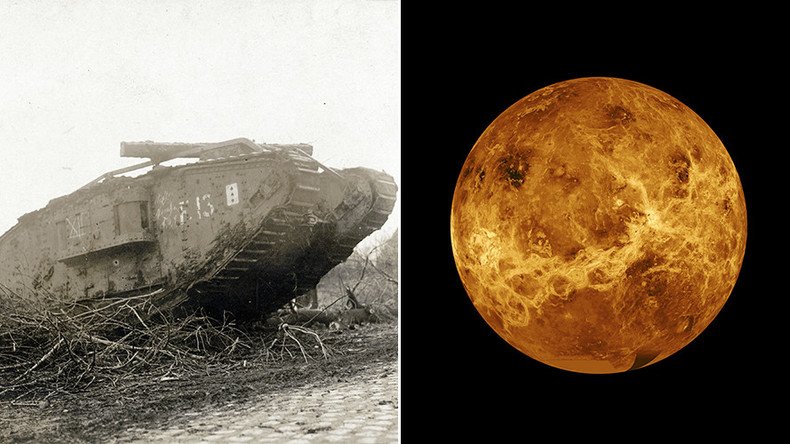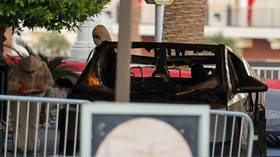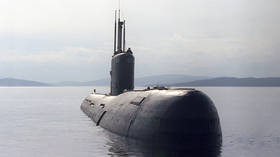WWI tanks influence NASA’s planned Venus lander (VIDEO)

Sometimes you have to go back before moving forwards, and NASA scientists are hoping they can take design tips from WWI tanks for a Venus probe that can survive the planet’s toxic environment for more than a few hours.
Venus might be Earth’s neighbor, but the gaseous planet is also an incredibly uninviting location for spacecraft, with its lava plains and fiery volcanoes.
Temperatures on the planet can reach an estimated 462 degrees Celsius, while the surface pressure is about 92 times the weight that we experience here on Earth.
READ MORE: Possible joint Russia-US mission to Venus takes shape, researcher says
To date, just nine spacecraft have successfully touched down intact on Venus. Numerous others have either been lost on launch or had their electrics thrown into disarray during the journey.
One of the most successful Venus lander missions was carried out by the Soviet Union in 1981 when Venera 13 (Venus 13) captured the first color images from the surface of the planet. Even then, the craft only lasted a total of 127 minutes before contact with it was lost.
Enter NASA’s Jet Propulsion Laboratory (JPL) - the agency seeking to implement a Venus lander that can “take a beating and keep on ticking.”
#AREE A Clockwork Rover for Venus | NASA https://t.co/Co50mx9xuxpic.twitter.com/VSs6tXnziY
— matiere* (@matiere) August 25, 2017
The US space agency says it hopes to use a clockwork rover, which, for an interplanetary spacecraft, would have more in common with a WWI tank or mechanical computer than one might think.
The idea would be to strip out the electronics on the lander as far as possible and use gears instead. The reason? To make the machine less susceptible to planetary conditions so harsh that they can fry electronic instruments.
READ MORE: Venus may have once been habitable, possessed atmosphere similar to Earth - NASA
Dubbed the Automaton Rover for Extreme Environments (AREE), NASA believe it could be an alternative to the development of a $3 billion liquid gas cooling system. Different AREE prototypes have already been put forward, including a spider-like construction.
However, this design is thought to be too fragile and the final model is expected to have tracks of some kind.
In a statement, JPL engineer Jonathan Sauder suggested that analog technology could be an unexpected savior for Venus landing operations.
“Venus is too inhospitable for the kind of complex control systems you have on Mars now,” Sauder said. “But with a fully mechanical rover, you might be able to survive as long as a year.”












